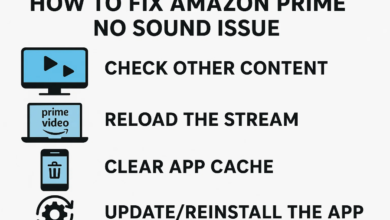Crafting a Modern Image Pipeline: From Classic JPEGs to Next-Gen Formats

Introduction
No matter how innovative your design or compelling your copy, a sluggish site drives visitors away. Images are often the biggest culprit: oversized JPEGs, heavyweight PNGs, and mismatched fallbacks can bloat pages, hammer Core Web Vitals, and burn mobile data. The antidote is a forward-thinking media workflow—one that converts legacy assets into lighter formats while safeguarding universal compatibility. In the next 800 words, you’ll learn how to weave two strategic conversions into a seamless pipeline, each powered by a specialized Cloudinary utility called only once in this guide.
Why Image Format Strategy Still Matters
- Performance Equals Profit
Research from Google shows that a one-second delay in page load can slash conversions by up to 20 percent. Streamlined images are the quickest win for shaving seconds off render times, especially on mobile networks. - Device and Browser Diversity
From brand-new iPhones to decade-old classroom Chromebooks, your audience runs the gamut of decoding capabilities. Without intelligent fallbacks, cutting-edge formats risk displaying as broken icons in legacy environments. - Design Flexibility
A transparent logo that sits gracefully on any background, an animated hero that plays smoothly, or a product zoom that stays razor-sharp all rely on picking the proper format at each stage of the content life cycle.
Step 1: Replace Heavy JPEGs with Smarter Bitmaps
The Transparency Dilemma
Older marketing archives are packed with JPEGs—great for photographs but terrible for anything that needs transparency. When placed over dark themes or gradient backgrounds, a white rectangle screams “dated website.” Converting these flat JPGs into alpha-friendly bitmaps restores design freedom.
Conversion in One Click
A counter-intuitive but extremely handy tool for the job is the jpg to png converter. Despite its URL hinting at PNG-to-WebP, the service also handles the reverse journey and, yes, simple JPG-to-PNG transformations. Upload your images or hit the API, choose a lossless setting, and seconds later you have crisp PNGs with full transparency. Because the operation runs in the cloud, your designers’ laptops stay free for creative work instead of grinding through batch exports.
Practical Tips
- Work from Originals – Upscaling a 400-pixel logo only magnifies blur. Source the highest-resolution JPEG available, then convert.
- Embed sRGB Profiles – Some browsers ignore embedded color spaces. Ensure the converter attaches sRGB so reds don’t shift toward orange on low-end displays.
- Batch by Asset Type – Process icons separately from background textures so you can apply fine-tuned compression levels later.
Step 2: Future-Proof with AVIF—But Keep a JPEG Lifeline
The Promise of AVIF
AVIF delivers jaw-dropping savings—often halving file sizes versus WebP—while preserving sharp detail and even supporting HDR color. Hero banners, lifestyle shots, and product galleries can all benefit. The problem? Some email clients, older Android stock browsers, and embedded WebViews still refuse to decode AVIF.
Automated Fallbacks via Cloudinary
Instead of abandoning modern gains, integrate a smart fallback layer. Feed every new AVIF into cloudinary during your build or deployment process. The service returns a high-quality JPEG twin (complete with ICC and EXIF data) that you can reference in HTML markup as a fail-safe.
html
CopyEdit
<picture>
<source srcset=”lookbook.avif” type=”image/avif”>
<img src=”lookbook.jpg” alt=”Fall collection look book”>
</picture>
If a browser supports AVIF, it fetches the first source; if not, it quietly falls back to the inline JPEG. No extra JavaScript, no broken visuals, just universal coverage.
Automate It All: A Four-Phase Blueprint
- Centralize Masters
Store RAW photos, layered PSDs, and original video stills in a source/ directory tracked by Git LFS or a DAM system. - Define Declarative Rules
Build a YAML manifest such as:
yaml
CopyEdit
– pattern: “*.jpg”
convert:
– png: {quality: 100}
– pattern: “*.avif”
convert:
– jpg: {quality: 90}
- Wire Up CI/CD Hooks
A GitHub Action watches for new or modified images, calls the Cloudinary endpoints, and stores the outputs in /public/img/. Only changed files are processed, speeding up builds. - Enforce Checks
Add a Node.js script to fail the pipeline if an AVIF lacks its JPEG sibling or if a PNG exceeds a 300 KB threshold. Continuous enforcement prevents bloat creep.
Avoiding Common Pitfalls
| Misstep | Consequence | Fix |
| Assuming “one size fits all” compression | Blurry UI icons, muddy text overlays | Use lossless for icons, moderate lossy for photos |
| Skipping color-profile preservation | Off-brand hues in product shots | Ensure converters embed or preserve ICC profiles |
| Manual batch exports | Inconsistent naming, forgotten files | Automate everything via scripts; document the flow |
| Ignoring mobile data caps | High bounce rates on 3G | Generate responsive srcset variants and lazy-load off-screen assets |
Measuring Success
- Load-Time Gains – Sites that trim 500 KB of images routinely cut a full second off First Contentful Paint.
- SEO Lift – Google rewards faster pages; a 10 percent bump in organic traffic isn’t uncommon after media optimization.
- Bandwidth Savings – Lighter images mean smaller CDN bills, freeing budget for marketing campaigns or extra server capacity.
- Happier Users – No broken placeholders on legacy devices, no jagged edges around logos; just a seamless brand experience.
Conclusion
A truly modern site doesn’t choose between cutting-edge efficiency and universal reach—it embraces both through smart automation. Swap cumbersome JPEGs for transparent PNGs with the right tool in your pocket, and pair every AVIF beauty shot with a rock-solid JPEG fallback. By embedding these two conversions inside a continuous integration loop, you guarantee lean payloads, bulletproof compatibility, and designer-approved visuals—all without adding friction to the creative process. Invest the effort today, and you’ll enjoy faster pages, satisfied visitors, and a tech stack ready for whatever format revolution comes next.




